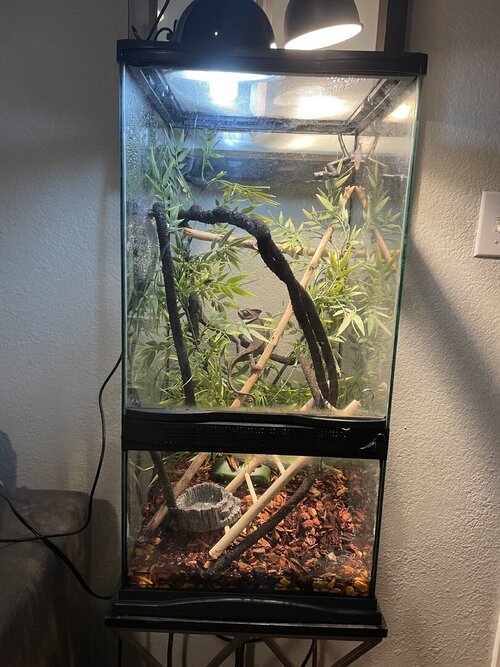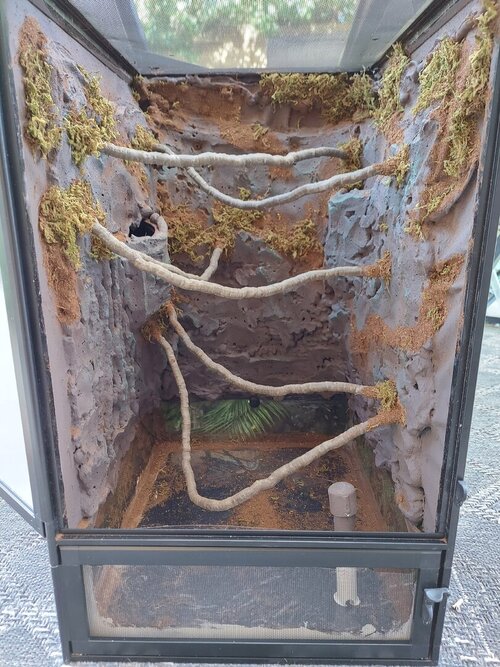BellaCoop
New Member
Hello everyone,
I am trying to rebuild my chameleons home. I have a glass habitat due to living in the desert and it being very difficult to keep humidity.
What I need help with is a way to make it so I can drain the bottom of the tank so I can put my misters on a more consistent cycle. I tried doing the natural way but I spray to much water in there.
I am trying to rebuild my chameleons home. I have a glass habitat due to living in the desert and it being very difficult to keep humidity.
What I need help with is a way to make it so I can drain the bottom of the tank so I can put my misters on a more consistent cycle. I tried doing the natural way but I spray to much water in there.







